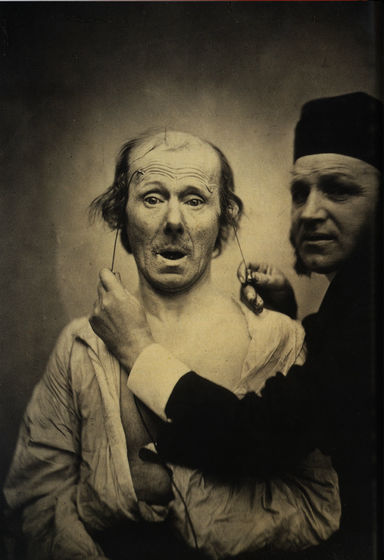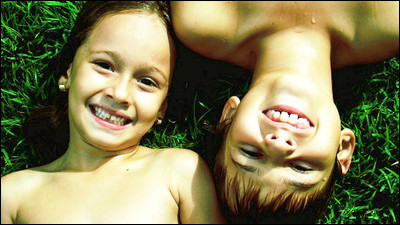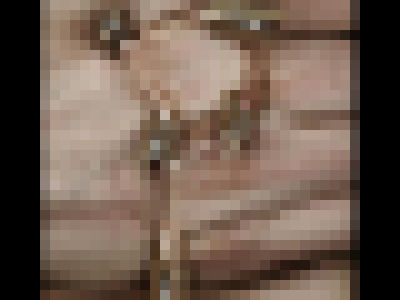The "smiling face of Duchenne" which is also said to be "real smile" originally was a face made by pressing the electrode against the face

ByDavid Mello
There are various "smiles" when sorting as "smile" in a bite, according to research, there seems to be a lot of things floating on smile for reasons other than "empty" emotion. Among them, as the "real smile" and "true smile" the expression of the mouth corners and cheeks as the tongue corners have lowered, the expression "smiling" is called "Duchenne's smile", but this expression is about facial expressions The scholar who was doing pushing the electrode against the subject 's face was a man - made expression.
BBC - Future - There are 19 types of smile but only six are for happiness
http://www.bbc.com/future/story/20170407-why-all-smiles-are-not-the-same

"Study of smile", a 19th century French neurologistDuchenne do BoulogneIt is known. In the psychology of the time, it was thought that the muscles and souls of the human face were directly connected, and Duchenne looked at how the facial expressions were made.
Duchenne puts the electrode directly on the man's face. It is a man who does not have a sense of face that is a subject.

Placing the electrode on one side of the face makes the expression different on the left and right of the face.

In the experiment, the cheek rose and the face with a wrinkle like "Crow 's footprints" around the eyes, a joyful and happy overflowing expression. This is what is called "Duchenne's smile (Duchenne Smile)".

"Duchenne Smile" is sometimes expressed as "real smile", and seems to be considered a smile to aim for from the idea that "happiness comes by smile". However, in 2014, research results that "Smile when you are depressed makes you feel better instead of feeling better" has also been announced, so moderate to make a "smile" in moderation.
"Laugh to be happy" is the opposite effect - GIGAZINE

By the way, animals sometimes smile. For example, a chimpanzee may open her lips up and down to show a gum, but this "smile" seems to come out of fear. The bottom picture seems to be macaquesal, but I'd like to ask if it is "a smile" or "a smile of terror".

ByEric Kilby
"Smile of fear" can also be shown by humans, for example, that an infant is smiling is said to be "happy" or "when it is difficult"the studythere is.
Also, there are times when you smile when you accept sorrow and pain. This is well known experimental results by Kearney Landis, a graduate student at the University of Minnesota in 1924.
Studies of emotional reactions. I. 'A preliminary study of facial expression. "
http://psycnet.apa.org/index.cfm?fa=buy.optionToBuy&id=1926-08202-001
Landis gathered classmates and teachers in a room and conducted experiments to see whether specific experiences such as pain and shock would bring out the same expression. Subjects were given various shocks, such as putting fireworks under the chair that was sitting, being shocked, being killed by the eyes. The result was seen to be "smile", not crying or angry.
The same "smiling face of sorrow" may have sports athletes as well, for example, when analyzing photographs of the medalists of the Athens Olympics, it is known that silver medalists had this "smile of sorrow" floating.
In addition, "smile" became popular at least in EuropeSince the "smile revolution" came in Paris in the 18th century. Until then it seemed that there was a common recognition that a meaningless smile is not like to show in public, and in Russia there is the word "smile without a reason is a symbol of foolishness".
Moreover, as a way of thinking still seems to be still alive, the item "funny voice about Norway and Norwegian" of a leaflet named "Living and working in Norway" distributed by the Norwegian government includes the person who stayed in Norway for a long time As "there is", "If a stranger comes laughing in the street, you think that you are" 1. drunk "," 2. not insane "," 3. an American "," everything from 1 to 3 " It is written. It is somewhat creepy when I can laugh at a stranger in Japan, but it can also be said that smiling faces are so prominent that it makes it much more expressable to write like this.
Besides this, BBC points out the existence of "embarrassing smile", "smile of decoration", "smile of contempt" "smile enjoying anger".
Related Posts:






